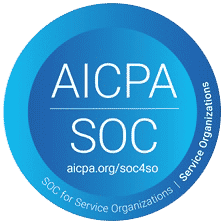Crisis management is the process of preparing for, responding to, and recovering from unexpected disruptions that threaten an organization’s operations. Having a strong crisis management strategy in place is essential for businesses to maintain stability and continue serving their customers.
One often-overlooked aspect of crisis management is workforce scheduling. During a crisis, ensuring the right employees are in the right place at the right time can make all the difference. Effective scheduling can help mitigate disruptions, enhance productivity, and support overall business resilience.
This article will explore the five stages and five C’s of crisis management, discuss crisis management strategies, and highlight how workforce scheduling plays a key role in navigating crises effectively.
What are the 5 Stages of Crisis Management?
A structured crisis management approach ensures businesses can handle disruptions efficiently. The five stages of crisis management include:
1. Prevention
The first stage focuses on identifying potential risks and implementing proactive workforce scheduling strategies. Businesses can use predictive analytics to anticipate staffing needs and create contingency plans for emergencies. By leveraging data and workforce management software, companies can identify potential weak points and develop strategies to mitigate risks before they become crises.
A crisis management strategy that integrates workforce scheduling ensures that businesses have backup personnel trained and ready to step in. Proactively preparing alternative shift schedules and having a pool of available employees minimizes the risk of service disruptions.
2. Preparedness
Crisis management planning involves developing emergency workforce schedules, cross-training employees, and implementing workforce management technology to respond swiftly to disruptions. Companies that prepare in advance can rapidly reassign employees to different roles, minimizing downtime and maintaining essential services.
For example, food processing plants must always be prepared for unexpected supply chain disruptions or equipment failures. Cross-training employees ensures that additional personnel can step in when critical roles need to be filled, allowing production to continue without delays.
3. Response
During a crisis, real-time workforce scheduling is crucial. Automated scheduling tools can help managers quickly adjust shifts, fill gaps, and deploy critical personnel where they are needed most. For example, during a natural disaster, businesses can use automated scheduling to reassign workers to locations that require immediate attention, ensuring continuity of operations.
Organizations that lack flexible scheduling often struggle to adapt to crises, leading to workforce shortages, burnout, and inefficiencies. By implementing a workforce scheduling system that can make real-time adjustments, businesses can improve their crisis response capabilities.
4. Recovery
Once the crisis subsides, stabilizing workforce operations is a priority. Businesses should evaluate scheduling effectiveness and reallocate human resources to resume normal operations efficiently. Recovery planning includes assessing how well the crisis was managed and making necessary adjustments to future workforce scheduling strategies.
A crucial aspect of the recovery phase is addressing employee well-being. After a crisis, businesses must ensure that their employees receive adequate support, including adjusted work hours to prevent burnout, mental health resources, and opportunities for rest and recuperation.
5. Learning & Adaptation
The final stage involves reviewing scheduling data, identifying areas for improvement, and refining crisis management strategies to enhance future preparedness. Companies can use workforce analytics to assess performance metrics, measure employee efficiency, and adjust crisis response plans accordingly.
Analyzing crisis management examples from similar industries can help businesses refine their strategies. Learning from past experiences allows organizations to improve their workforce scheduling processes and implement stronger policies to mitigate future risks.

What are the 5 C’s of Crisis Management?
Successful crisis management is guided by five key principles: communication, collaboration, competence, commitment, and continuity. These principles work together to ensure that a company is prepared, adaptable, and able to respond effectively to unforeseen challenges. By following these principles, businesses can protect their operations, support their workforce, and maintain a level of flexibility that allows them to recover and emerge stronger after a crisis.
1. Communication
Clear and timely communication ensures employees receive real-time updates on shift changes, expectations, and safety protocols. Companies should utilize workforce scheduling platforms that enable instant messaging and notifications to keep employees informed.
Transparent communication fosters trust among employees and ensures that everyone understands their roles during a crisis. Businesses that invest in communication tools as part of their workforce scheduling systems are better equipped to handle disruptions effectively.
2. Collaboration
Cross-departmental coordination is vital to align staffing with critical business functions, ensuring that essential roles remain filled. Workforce scheduling tools allow businesses to collaborate seamlessly, ensuring smooth transitions during a crisis.
Collaboration also extends beyond internal teams—businesses may need to coordinate with external partners, suppliers, and government agencies to ensure that resources are allocated efficiently during a crisis.
3. Competence
Placing skilled employees in key positions through optimized workforce scheduling enhances a company’s ability to respond effectively to crises. Having a crisis-ready workforce with the right expertise is essential for rapid response and recovery.
Businesses should invest in continuous training and upskilling programs to ensure their workforce remains competent in handling various crisis scenarios. Training sessions on emergency protocols and leadership skills contribute to a more resilient workforce.
4. Commitment
Supporting employees with fair and flexible scheduling fosters loyalty and ensures a dedicated workforce during times of uncertainty. Employee morale plays a crucial role in crisis management, and businesses that prioritize their workforce are more likely to retain skilled professionals.
By implementing crisis management strategies that account for employee well-being, businesses can foster a culture of commitment and resilience. Organizations that show support for their workforce during challenging times benefit from higher employee engagement and retention rates.
5. Continuity
Strategic workforce scheduling helps businesses maintain essential operations during a crisis, preventing financial losses and service disruptions. By optimizing shift schedules and reallocating labor resources quickly, companies can ensure that critical functions continue without interruption. This proactive approach allows businesses to adapt to the crisis while minimizing the impact on operations.
Integrating crisis management into workforce scheduling also ensures long-term sustainability. By having contingency plans and cross-training employees in place, companies can maintain operations even when key personnel are unavailable. This flexibility enables faster recovery and smoother transitions back to normalcy after the crisis is resolved.

The Importance of Crisis Management
Crisis management plays a pivotal role in ensuring that a business can maintain stability during times of disruption. Its importance spans several critical aspects, all of which contribute to an organization’s ability to survive and thrive even in challenging circumstances. One of the primary reasons crisis management is so crucial is its ability to minimize business disruptions. In the absence of a well-defined strategy, a company can face long periods of operational downtime that affect productivity, customer satisfaction, and even long-term goals.
A survey by Forbes found that less than half of U.S. companies have a formal crisis communication plan, which can leave many unprepared when a disruption occurs. In contrast, businesses with an effective crisis management plan can respond quickly to mitigate these disruptions, keeping operations as continuous as possible despite external factors. Without these strategies, businesses risk prolonged downtime that could impact their survival. In fact, 90% of businesses fail within a year if they cannot get back up and running within five days after a disaster.
Maintaining financial stability during a crisis is another vital aspect of crisis management. Disruptions can lead to significant financial losses, whether due to delayed production, increased costs, or operational inefficiencies. A crisis management strategy that includes swift action and proper resource allocation can minimize these losses, ensuring that the business maintains cash flow and mitigates the negative financial impact of the event.
Effective crisis management allows businesses to optimize resources during challenging times. Whether it’s human resources, financial assets, or operational capacity, a crisis often forces organizations to stretch their resources. By managing these resources effectively, companies can continue to operate and serve their customers without overextending or wasting valuable assets.
Crisis Management Strategies
To navigate crises effectively, businesses need to implement strategies that enhance preparedness, resilience, and adaptability. Here are several key strategies and why they are necessary:
Develop Workforce Contingency Plans
What It Is: A workforce contingency plan outlines the actions a business will take if a crisis leads to staffing shortages. This includes identifying backup employees, cross-training staff to fill critical roles, and creating flexible shift schedules that can be adjusted quickly during disruptions.
Why It’s Useful: These plans ensure that critical functions are always covered, even if key employees are unavailable due to emergencies, illness, or unforeseen events. Having ready-to-deploy backup staff helps maintain business continuity without operational delays.
Use Automated Scheduling Technology
What It Is: Automated scheduling technology refers to software tools that streamline the process of creating, managing, and adjusting employee schedules. These platforms can make real-time changes to shift assignments, manage workforce availability, and ensure that the right personnel are in place to meet business needs, even during a crisis.
Why It’s Necessary: Automated scheduling enables businesses to quickly adapt to fluctuating workforce demands during a crisis. By automating the scheduling process, companies can avoid human errors, reduce time spent manually adjusting shifts, and ensure that labor resources are optimized to prevent operational disruptions.
Train Employees in Crisis Response Protocols
What It Is: Employee crisis training involves preparing staff members with the knowledge and skills needed to respond to a crisis. This can include emergency response procedures, safety protocols, communication strategies, and decision-making techniques. Continuous training ensures that employees know how to act quickly and effectively in an emergency situation.
Why It’s Helpful: Training employees in crisis response ensures that everyone knows their role when a disruption occurs, reducing confusion and enabling a more organized, efficient response. Well-trained employees are better equipped to make decisions under pressure and help minimize the impact of the crisis on the business.
Conduct Regular Crisis Simulations
What It Is: Crisis simulations are mock drills that simulate real-world crisis scenarios, such as natural disasters, supply chain disruptions, or system failures. These exercises allow businesses to practice their response plans and assess the readiness of their team. They can involve everything from evacuations to decision-making under pressure.
Why It’s Useful: Simulations give businesses the chance to test the effectiveness of their crisis response strategies in a controlled environment. They help identify weaknesses in the plans, improve team coordination, and ensure that employees are prepared to react quickly and effectively when a real crisis occurs.

Workforce Scheduling as a Crisis Management Tool
Workforce scheduling is a vital component of crisis management, ensuring businesses can navigate disruptions effectively. By integrating strategic workforce management into crisis response plans, companies can enhance resilience, protect their workforce, and maintain operational stability.
Investing in advanced workforce scheduling solutions is a proactive approach to crisis management planning. As businesses continue to face unforeseen challenges, prioritizing workforce flexibility and preparedness will be key to long-term success.
About the Author
Claire Pieper is the Digital Marketing Specialist for Indeavor. In her role, she specializes in crafting strategic and engaging content, ensuring that customers are well-informed. Claire is dedicated to enhancing the customer experience and optimizing the user journey through Indeavor’s solutions. To learn more or get in touch, connect with Claire on LinkedIn.







